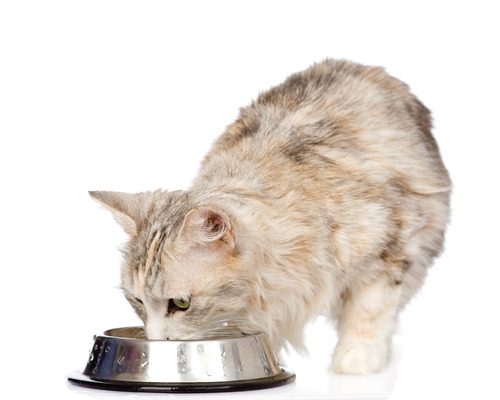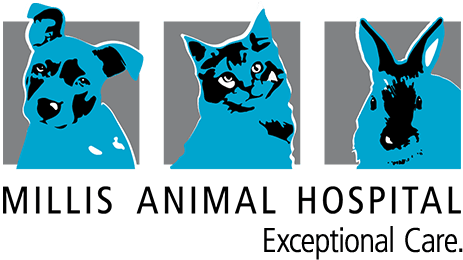Cats tend to be creatures of habit, so when their behavior changes—especially around eating or drinking—it often raises concern. If you’ve recently asked yourself, “Why is my cat drinking so much water?”, it’s worth looking into. Increased thirst in cats, also known as polydipsia, can have several causes. Some are benign, while others may point to underlying health conditions that require veterinary attention. This blog explores possible reasons your cat may be drinking more than usual and helps you understand when it’s time to schedule a visit to your vet. If you notice unusual drinking habits in your cat, Millis Animal Hospital in Millis, MA is here to help. Call us at 508-376-5317 or make an appointment online to have your cat evaluated.

What Is Considered Excessive Water Intake in Cats?
Before assuming something is wrong, it helps to know how much water cats typically drink. On average, a healthy adult cat drinks about 3.5 to 4.5 ounces of water per 5 pounds of body weight each day. That amount can vary depending on your cat’s diet—cats who eat dry food usually drink more than those who eat wet food. Environmental factors such as temperature and activity level can also influence how much water your cat needs.
A noticeable and sustained increase in water consumption is worth monitoring. You might find yourself refilling the water bowl more often or seeing your cat drinking from unusual places, like faucets or toilets. If this change continues for more than a day or two, it’s time to consider the possible causes.
Potential Reasons Why Cats Drink More Water
A sudden increase in your cat’s water intake can be linked to a range of causes, from changes in diet to chronic health conditions. Below are some of the most common explanations.
Diet and Water Content
The food your cat eats plays a major role in how much water they need to drink. Cats on dry kibble tend to consume more water compared to cats who eat wet food, which already contains a high percentage of moisture. If you’ve recently switched from wet food to dry, your cat may be compensating by drinking more water. Additionally, certain high-sodium treats or prescription diets may cause increased thirst. Always read food labels and talk to your veterinarian about the best dietary options for your cat’s needs.
Warmer Weather and Increased Activity
Seasonal changes can also cause a spike in water intake. Cats are likely to drink more during warmer months or after more physical activity, especially if they spend time outdoors. This behavior can be completely normal as your cat regulates its body temperature. Still, even in these cases, a sudden and significant increase in thirst should not be ignored. If nothing in your cat’s routine has changed but you’re still asking, “Why is my cat drinking so much water?”, it may point to a medical issue.
Health Conditions That Can Cause Increased Thirst
If increased drinking is not due to food or environmental factors, it may signal an underlying health condition. Several diseases commonly seen in cats can lead to excessive thirst and should be evaluated by a veterinarian.
Chronic Kidney Disease
Chronic kidney disease (CKD) is one of the most common causes of increased thirst in older cats. The kidneys play a vital role in filtering waste and regulating hydration. When they begin to lose function, the body compensates by producing more urine and triggering thirst to prevent dehydration. In addition to drinking more water, cats with CKD may urinate more frequently, lose weight, or show a decrease in appetite. This condition tends to progress slowly, but early diagnosis can help your vet manage symptoms and improve your cat’s quality of life.
Diabetes Mellitus
Diabetes in cats interferes with the body’s ability to regulate blood sugar, which can lead to excess glucose in the urine. This causes an increase in urination and, subsequently, thirst. You may also notice weight loss despite a normal or increased appetite. If you suspect your cat is showing signs of diabetes, including drinking more water than usual, prompt veterinary testing is necessary. Untreated diabetes can lead to serious complications.
Hyperthyroidism
Hyperthyroidism is a condition caused by an overactive thyroid gland and is commonly seen in middle-aged and senior cats. It leads to a range of metabolic symptoms, including increased thirst, weight loss, frequent urination, and sometimes vomiting or hyperactivity. This condition is typically diagnosed with a blood test and can be managed with medication, dietary changes, or other treatment options. If your cat is drinking more water and showing additional symptoms, schedule an exam with your veterinarian.
Urinary Tract Infections or Disorders
Cats with urinary tract infections (UTIs), bladder inflammation, or other urinary disorders may experience increased thirst. These conditions often result in discomfort during urination, frequent urination, or blood in the urine. While UTIs are more common in female cats and older cats, they can occur in any age group. A urinalysis can help your vet determine whether a UTI or another urinary issue is contributing to your cat’s water intake.
How to Monitor Your Cat’s Drinking Habits
Noticing that your cat is drinking more is the first step, but tracking that change more closely can help your veterinarian assess the situation. Here are a few ways to monitor your cat’s hydration habits at home.
- Use a Measured Bowl: Use a bowl with measurement lines or mark the water level with tape each time you refill it. This helps you see exactly how much water your cat consumes in 24 hours. Keep in mind that multiple cats or shared bowls make this harder to track.
- Note Behavior and Frequency: Observe how often your cat visits the water bowl and how long they stay there. Frequent, extended trips can suggest increased thirst. Watch for signs of urgency or discomfort during urination as well.
- Watch for Additional Symptoms: If your cat is drinking more water and also shows changes in appetite, weight, litter box habits, or energy level, make note of these changes. This information will be helpful to your veterinarian during your cat’s visit.
What Your Vet Will Do
If you bring your cat to Millis Animal Hospital because you’re concerned about their increased water intake, your veterinarian will start with a full physical exam and health history. They may recommend blood work, a urinalysis, or other diagnostic tests to evaluate kidney function, blood glucose levels, and hormone balance. Depending on the findings, your vet may suggest further testing or treatment options. The earlier a condition is identified, the better the outcome for your cat. Even mild changes in drinking behavior can be important clues.
When to Schedule a Veterinary Visit
You don’t need to panic if your cat drinks a little more on a hot day, but ongoing changes in hydration habits should never be brushed off. If you’re still wondering, “Why is my cat drinking so much water?”, and the behavior continues for more than a couple of days—or is accompanied by other symptoms—it’s time to take action. Call Millis Animal Hospital at 508-376-5317 or make an appointment online. Our team can evaluate your cat and provide answers you can trust.
Recent Posts
About Us
Millis Animal Hospital is a privately owned AAHA-accredited, Cat-Friendly Certified practice staffed with Fear Free Certified professionals. We know a thing or two about treating pets and their families the way they deserve, with excellent preventive care and surgical services tailored to your individual needs.
